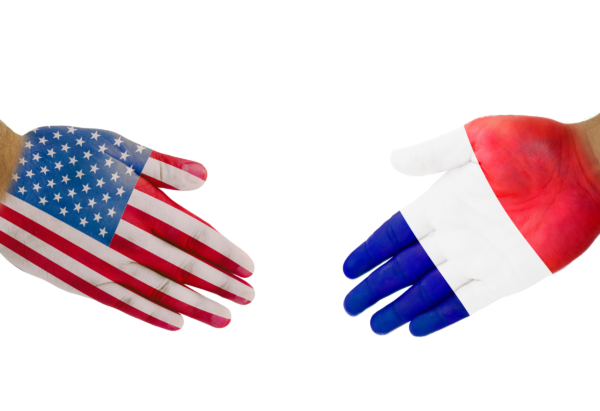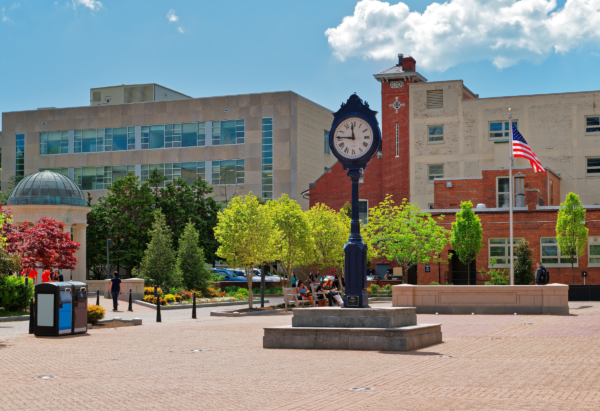Studies
- Start date: August or January.
- How the educational system works
Each student must pass around forty courses, or approximately 120 credits, to obtain a Bachelor’s degree in four years. Each student chooses an average of five courses per semester, corresponding to fifteen hours of classes per week. 1 hour of class = 1 credit. A minimum average of “C” (10 out of 20) is required to remain on the team. Students who successfully complete their baccalaureat generally have no problem maintaining an average above “C”. Courses are compulsory. Students are assessed on a continuous basis throughout the semester. Assessment is based on mid-terms and finals. These exams take the form of multiple-choice questions. The obligatory part of the American education system is the famous paper. In the latter, students are required to carry out extensive research and reflection in order to demonstrate the issues they are tackling. Adapting to this way of thinking can be confusing, but it’s a much more pragmatic approach to life. Most courses take place in the morning. Afternoons are reserved for training.
- How the courses run
The most surprising thing for a European student is the flexibility and laxity of teachers towards students. It should come as no surprise that students get up in the middle of class to go to the toilet, bring drinks and food to class, wear slippers or a cap, without anyone seeming to mind. Aside from this freedom, which often disturbs the other students, the lessons take the form of readings, with plenty of room for student input. They are not afraid to give their opinion on any subject. Another remarkable fact about the courses is the sheer number of readings required each week. That’s why it’s important to organize your timetable methodically, and not to take two important courses in the same day.
- Minimum academic requirement
Students who receive a scholarship must meet a minimum academic requirement that corresponds to the average in order to continue to benefit from the scholarship.
Courses
The list of courses on offer is imposing, and only a huge catalog can contain the exhaustive list and help us find our way through this maze. Impressive as it may seem, however, the choice remains limited for the student. Indeed, some courses are compulsory for freshmen. For the first two years, you have to take a core curriculum. Only in the third year can you specialize and choose your major. The great advantage of this system is that it gives students time to figure out what they really want to do. It is also possible to obtain a double major, but depending on the combination, the number of courses required can be very high. Your studies are therefore “à la carte”. “You choose the teachers, the timetable at the beginning of each session and the number of subjects you want to study.
Sportif Consulting can help you choose the subjects that particularly interest you. In any case, the university gives you plenty of time to choose during the add/drop period. The first fortnight of classes is a bit like self-service. Each student can go to any course and decide whether or not to enrol. However, courses are subject to the logic of supply and demand. And it’s not always easy to get the course you want.
Diploma
Associate = 2 years of studies
Bachelor = 4 years of studies
Master = 6 years of studies
Doctorate = 8 years of studies
Diploma equivalence
“The legal principle of equivalence does not exist in France. You can obtain an attestation of comparability for a diploma obtained abroad. This is a document that evaluates the diploma submitted in relation to the French system, which you can present to an employer, an administration organizing a competitive examination or a training establishment.”
Generally speaking, however, a Bachelor’s degree in the USA is equivalent to a Licence in France. You will be able to continue your studies at Master’s level in France.
Your American diploma allows you to work in France and anywhere else in the world.
If you began your studies in France, you can enter a Bachelor’s or Master’s program in the USA.
Housing
American schools require first-year students to live on campus for at least one year.
From traditional dormitories to apartments, the university offers a wide variety of student housing options.
All offer nicely furnished rooms, air conditioning, fiber and wifi, common areas, kitchens, washing machines and dryers.
Rooms are generally designed for two students. Single rooms are generally not available for new students.
Students share a large bathroom.
Accommodation is close to classrooms, cafeteria and sports facilities.
All first-year students must eat on campus.
Food
If you live on campus, students have access to the cafeteria for an all-you-can-eat meal and drinks. There’s a wide variety of food to choose from. The university can also run restaurants and cafés on campus to offer more variety.
Lunch generally starts at 11am and finishes at 2pm.
Dinner generally starts at 5pm and finishes at 8pm.
Activities
On-campus activities range from concerts and theater to movies. The American experience isn’t just about sports. You can also join one of the university’s many associations: choirs, religious groups, charities, theater, sororities and fraternities… There’s no shortage of choice, you just have to find your place.







